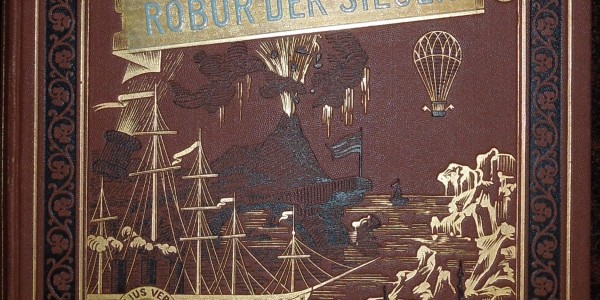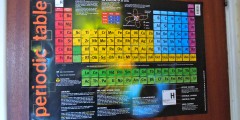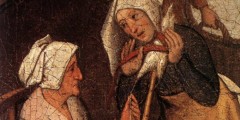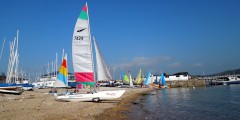Jules Verne: Making science visual
December 30, 2013
On Christmas Eve I had a chance encounter on twitter and the result is this blog post, or rather: essay. Richard Ashcroft had retweeted a tweet about a book by Adam Roberts. The tweet by Adam Roberts said: “Finished copies came by this morning’s post. Very lovely piece of book making!” The book retells Jules …
Is Ison (still) on?
November 29, 2013
Over the last weeks there has been much talk about a comet called Ison. As Wikipedia tells us “C/2012 S1, also known as Comet ISON or Comet Nevski–Novichonok, is a sungrazing comet discovered on 21 September 2012 by Vitali Nevski (Виталий Невский, Vitebsk, Belarus) and Artyom Novichonok (Артём Новичонок, Kondopoga, Russia). It attracted quite a …
Making science public: A question of colour
September 16, 2013
Yesterday I was staring at a poster of the periodic table hanging on our kitchen door, a remnant of my son’s school days. I began to muse; imagine it was just a black and white series of elements and numbers, as it was when it was first invented? Who decided to colour it in, and …
The ‘Making Science Public’ blog: What is it for?
August 17, 2013
Our ‘Making Science Public’ blog puzzles some readers, and perhaps rightly so. One blogger in particular pointed out recently that he found what we are doing ‘confusing’. This confusion emerged in particular in the context of us posting some guest-posts on climate science and climate politics (and climate scepticism) and also in the context of …
The little-known secret of “not-doing”
August 9, 2013
Guest post by our visiting fellow, Jeff Tamblyn, film maker and director of Kansas vs. Darwin. The campus itself might have been what drew me to the MayFest Grounds Tour at the University of Nottingham – it’s vast, sweeping, and dotted with stately buildings and huge trees, many of which are more than three centuries old. …
Science communication: From filling deficits to appreciating assets
August 4, 2013
I recently read a blog post on science communication by John Timmer and a response to this post by Peter Broks, which made me think about (a) the public understanding of the ‘deficit model’ and (b) how one can get from saying science communication should be engaging in the ‘co-creation’ of meaning (Broks) to giving …
Making Science Public: A one-year anthology of blog posts
August 2, 2013
In spring 2012 we began work on a five-year research programme funded by the Leverhulme Trust entitled ‘Making Science Public: Challenges and Opportunities’ (2012-2017). The programme deals with all aspects of ‘making science public’, but in particular with controversies around science, politics, publics and participation. As part of the programme, we began writing a blog …
Science communication: Bridging theory and practice
May 21, 2013
On Friday 17 May 2013 I was at the Science Communication Conference 2013, organised by the British Science Association. I participated in a session on ‘Bridging theory and practice’ coordinated by Paul Manners, Director of the National Coordinating Centre for Public Engagement and Helen Featherstone, Project Manager (Public Engagement) for the CATALYST project at Exeter …
Debating empty chairs: creationism, climate and public engagement
May 17, 2013
This week, Making Science Public has been very proud to welcome US film director Jeff Tamblyn during his UK visit. On Wednesday we screened his amazing film, Kansas vs Darwin, a documentary charting the attempts by members of the Kansas School Board to introduce creationism and intelligent design into high school science teaching. The film …










